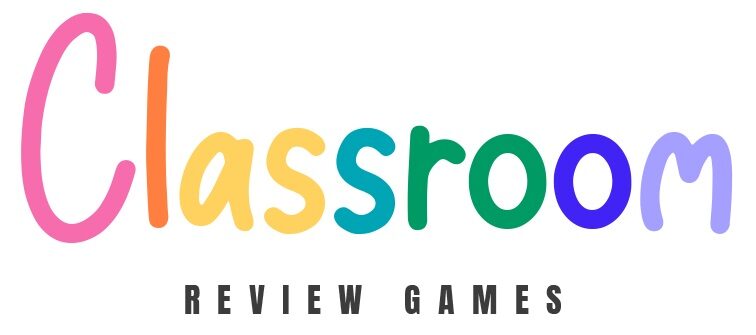Make Literature Review Fun Again: Classroom Games That Actually Work
Transform literature reviews into dynamic learning experiences with engaging review techniques that spark genuine student interest. Create digital scavenger hunts where students race to find specific themes, quotes, or character developments across multiple texts using tablets or classroom computers. Break complex literary analysis into bite-sized challenges using colorful task cards that students collect and trade, turning comprehension into an interactive game. Design “Literary Speed Dating” sessions where students rotate between stations, spending three minutes analyzing different aspects of texts before moving to the next prompt.
These active approaches replace traditional passive reading with movement, collaboration, and friendly competition. Students naturally develop deeper analytical skills while having fun, and you’ll find grading becomes more enjoyable when reviewing their creative responses. Best of all, these techniques adapt easily to any grade level or technology setup, allowing you to customize the challenge level and format to match your classroom’s unique needs.

Transform Book Discussions into Interactive Adventures
Character Detective Games
Turn your literature review into a detective agency with these engaging character analysis games! Create “Character Suspect Files” where students collect evidence about characters throughout their reading. They can gather clues about personality traits, motivations, and relationships using sticky notes or digital tools.
Try the “Character Connection Web” game where students use yarn or digital mind-mapping tools to visualize relationships between characters. Each connection must be supported by textual evidence, making it a fun way to practice citation skills.
Another crowd-pleaser is “Character Evolution Timeline.” Students track character changes like detectives following leads, marking significant moments that shape the character’s development. Use a physical timeline on your classroom wall or create digital versions using presentation tools.
For tech-savvy classes, set up “Character Social Media Profiles” where students document character interactions and development through pretend posts and updates. This modern twist helps students understand character perspectives while practicing digital literacy.
Remember to adapt these games based on your students’ grade level and abilities. The key is making character analysis feel like solving an exciting mystery rather than completing a worksheet.
Plot Timeline Races
Get your students racing against time and each other with this exciting twist on story sequencing! Plot Timeline Races are energetic team-based learning activities that transform traditional literature review into a friendly competition. Divide your class into small groups and give each team a set of important plot events written on index cards or sticky notes. When you say “go,” teams work together to arrange their events in chronological order.
Make it extra engaging by setting a timer for 2-3 minutes and playing upbeat music while students collaborate. For younger grades, use 6-8 major events; for older students, challenge them with 12-15 plot points including subtle details. Once time’s up, teams take turns presenting their timeline and explaining their reasoning.
Spice things up by awarding points for accuracy, speed, and teamwork. You can even create a bracket-style tournament where winning teams advance to face new story sequences. This activity works brilliantly with any narrative text and keeps students actively engaged while reinforcing their understanding of story structure.
Digital Game Templates for Literature Analysis
Literary Jeopardy Adaptations
Transform your literature discussions into an exciting game show experience when you customize Jeopardy for literature reviews! Start by creating five distinct categories that align with your book or reading unit. Popular options include Character Analysis, Plot Events, Vocabulary, Literary Devices, and Theme/Symbolism.
Make questions progressively challenging, starting with basic recall for 100 points and moving to critical thinking for 500 points. For example, a 100-point question might ask “Who is the main character?” while a 500-point question could explore “How does the protagonist’s journey reflect the author’s message about society?”
Use free online Jeopardy makers or create a simple PowerPoint template with hyperlinks. For a low-tech version, flip chart paper works great – just cover answers with sticky notes! Consider these engaging twists:
– Add a “Daily Double” featuring quotes or passages
– Include visual clues using book covers or character sketches
– Create a “Lightning Round” for vocabulary terms
– Design team challenges for collaborative learning
Don’t forget to keep score using a whiteboard or digital tracker. Students love the competitive element, and you’ll love how engaged they become with the material. Remember to save your template – you can easily modify it for future books!

Theme and Symbolism Quests
Transform your literature review sessions into exciting treasure hunts for themes and symbols with these engaging quest-based activities! Create “Symbol Safari” cards where students collect and match recurring symbols throughout the text, earning points for identifying deeper meanings and connections. Set up “Theme Teams” where small groups compete to track thematic development across chapters using creative evidence boards.
Make it digital with online scavenger hunts using tools like Padlet or Jamboard, where students pin examples of symbolism they discover. Try the “Literary Detective” challenge, where students follow clues about themes and symbols, building their own interactive mind maps as they progress.
For a hands-on approach, design “Symbol Sorting Stations” around your classroom. Students move between stations, analyzing different symbolic elements and recording their findings in custom “Literary Explorer” journals. Create “Theme Threading” activities where students physically connect related quotes and passages with colored yarn on a bulletin board.
Keep students engaged with “Symbol Spotlight” cards – each student becomes an expert on one symbol and teaches others through mini-presentations. For assessment, try “Theme Theater” where teams act out important symbolic moments and their significance. These interactive approaches make abstract concepts tangible while building critical thinking skills through play-based learning.
Remember to customize difficulty levels and adapt these quests to suit your specific text and student needs. The goal is to make literary analysis feel like an exciting journey of discovery rather than a tedious task.
Quick-Start Review Activities

5-Minute Literary Lightning Rounds
Need to energize your literature review sessions? These rapid-fire games will keep students engaged while reinforcing key concepts in just five minutes!
Character Speed Round: Students have 30 seconds to list as many character traits as possible for a specific character. The student with the most relevant traits wins!
Plot Point Relay: Split the class into teams. Each team lines up, and students take turns racing to the board to write one plot event in sequence. First team to accurately complete the story’s timeline wins.
Word Web Sprint: Write a central theme or character on the board. Students have one minute to create word webs connecting related concepts, symbols, or quotes. Compare webs as a class for quick discussion.
Lightning Quote Match: Display five quotes on the board. Students race to match each quote to the correct speaker or chapter. Perfect for reviewing dialogue and context!
60-Second Summary: Students pair up and take turns summarizing a chapter in exactly one minute while their partner times them. Great for practicing concise storytelling!
Mix and match these games or create variations to suit your classroom needs. They work brilliantly as lesson warm-ups or wrap-up activities!
Last-Minute Literature Challenges
Need a quick literature review activity? Here’s your rescue pack of engaging challenges that take 10 minutes or less! These instant activities work brilliantly when you’re short on prep time or need to energize your class quickly.
Try the “Character Speed Dating” challenge – give students 3 minutes to write down three key traits of a character, then pair them up to “interview” each other’s characters for 2 minutes each. It’s fast, fun, and gets everyone thinking critically!
The “Plot Pyramid Race” is another winner – students quickly sketch a visual story arc and label five key plot points in just 5 minutes. Make it competitive by having teams race to complete accurate pyramids first.
For vocabulary focus, launch a “Word Chain Challenge” where each student adds a meaningful word from the text, connecting it to the previous word. Set a 5-minute timer and see how many connected words your class can create.
Got devices handy? Try “60-Second Summary Tweets” – students compose ultra-concise book summaries following tweet format rules. It’s perfect for checking comprehension while teaching the art of brevity!
Game-based literature review techniques offer an exciting path to transform what could be a mundane task into an engaging, memorable learning experience. By incorporating elements like competition, rewards, and creative challenges, you’ll find students more motivated to dive deep into texts and retain key information. The flexibility of these approaches means you can easily adapt them to suit different grade levels, subject areas, and classroom dynamics.
Remember, you don’t need fancy technology or extensive resources to get started. Whether you choose digital tools or stick with hands-on activities, the key is to maintain a balance between fun and learning objectives. Start small by implementing one or two games, then expand your repertoire as you become more comfortable with the approach.
The benefits are clear: increased student engagement, better retention of material, improved critical thinking skills, and a more positive attitude toward literature review tasks. So why not give it a try? Your students will thank you for making literature review an activity they look forward to rather than dread. Take that first step today and watch as your classroom transforms into an exciting space for literary exploration!


